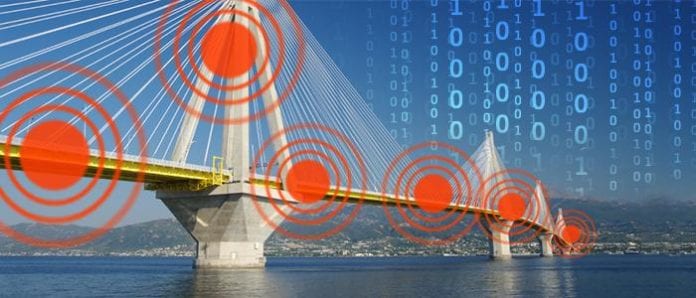The “Internet of Things” is growing at a phenomenal pace. Estimates about how many connected devices will be in operation by 2020 range from 25 billion to 75 billion. Even conservative analysts expect the amount of connected devices to quintuple over the next five years. Moreover, as devices proliferate, so will the amount of data produced. IDC’s Digital Universe study forecasts that annual data production will go from 4.4 zettabytes to 44 zettabytes by 2020. Whichever estimate turns out to be closest to the mark, the IoT is clearly set to impact virtually every industry over the coming years.
While a lot of focus has been given to “smart homes” and other consumer-facing aspects of the IoT, the major game-changers will be behind the scenes in the industrial Internet, where physical machinery is integrated with networked sensors and software to power manufacturing and business logistics. For example, supply chains in industries like mining are set to become a whole lot smarter. Beginning, literally at the coalface, devices will be able to use features such as GPS or radar to monitor the surroundings for potential safety concerns. Once extracted, ore can then be hauled by driverless vehicles aided by a similar array of sensors. Each machine can be equipped to alert human controllers when impending repairs are likely to be needed; thereby reducing breakdowns and costs simultaneously.
Everything in harmony
For the communication service providers conducting it all together in a harmonious symphony, the IoT represents an opportunity to open new revenue streams. This presents an invaluable lifeline at a time when traditional voice and data revenue continues to be eroded by over-the-top services, such as WhatsApp and all-you-can-eat data plans.
One key to success will be delivering a seamlessly connected service that makes things simpler for customers deploying the IoT. CSPs can add tremendous value by developing a suite of IoT-specific services and bundling the requisite components, such as SIM cards, transport, global roaming, compute and storage. Being able to turn to a service provider that offers the complete infrastructure and capability to deliver a ready-to-go IoT service will be far more attractive than having to purchase individual parts of the service from data center providers, CSPs and the other parties vying for their stake in the market.
CSPs are ideally placed to take up this role of IoT services aggregator, with much of the infrastructure and know-how already in place. However, they will need to consider how these services are packaged. For instance, when operating thousands of sensors and connected devices simultaneously, there will be different workloads and usages for each. Therefore, offering pooled billing rather than charging for the SIM in individual sensors will be much more convenient for the customer. When faced with a choice between an operator that charges for each SIM that goes over its 1 megabyte allowance and another that only charges if the entire network exceeds a limit of 6,000 gigabytes, customers will likely opt for the latter. However, machine-generated data is very different from consumer-created data in terms of being of a higher variety, frequency and volume. While it is less intensive than traditional customer usages, such as video streaming, the constant static nature of IoT sensors presents its own unique set of challenges. As such, CSPs must assess the cost of supporting a machine – as opposed to a subscriber – to ensure their services are profitably and competitively priced.
Analytics-as-a-service
There is also a major opportunity for CSPs to embed streaming analytics as part of their IoT services to offer additional value for customers. If the CSP is able to provide analytics-as-a-service while the data is being transported from the sensor to the data center, customers can cut down on the analytics that need to be done at the data center, as well as gaining access to other relevant network data that would otherwise not be available.
For example, beyond offering insights gleaned from live-sensor and IoT-device data, CSPs can offer critical management data about the health and security of the IoT network. These insights could help businesses identify potential disruptions that could impact services in real time, so that they can be prevented. For example, security analytics could be used to detect an incoming DDoS attack aiming to take down an organization’s IoT-enabled supply chain operations, so that malicious traffic can be rerouted and operations can continue as normal. This can even be automated by integrating analytics with self-optimizing network technology, so that the IoT customer doesn’t even know the attack was happening and remains totally unaffected.
CSPs calling the tune
The dramatic proliferation of data and devices will change data flows and present new challenges for connectivity providers, both internally and externally. Internally, they must make sure that their own information is as comprehensive and accurate as possible around how their network is being used and that they are able to apply advanced analytics in order to optimize business models. Externally, CSPs must be able to provide added value to companies beyond merely connecting devices. This will come through using analytics to offer first-class customer service through analytical insight to business stakeholders. The providers with the greatest ability to offer this service will place themselves firmly at the heart of the value-chain, becoming the indispensable conductors of the IoT.
Ben Parker is Guavus’ principal technologist. He is responsible for ensuring that the company’s products satisfy the needs of a diverse customer base, which uses analytics to maximize customer satisfaction, reduce network operational costs, maximize capital efficiency and identify new revenue sources.
Prior to his tenure at Guavus, Parker was the director of network ecosystem architecture at Verizon, where he led a team responsible for long-term network planning for the Verizon Wireless network. In 1997, he joined Sprint and began his career as a network systems specialist. Following his tenure at Sprint he held the position of VP of engineering at Oakley Networks. Parker holds a Bachelor of Science in environmental science from the University of Nevada at Reno and an MBA from Benedictine College. His post- graduate training includes electrical engineering and telecommunications from UC Berkeley, and project management from George Washington University. Parker currently holds 44 patents in the area of telecommunications.
Editor’s Note: The RCR Wireless News Reality Check section is where C-level executives and advisory firms from across the mobile industry share unique insights and experiences.


